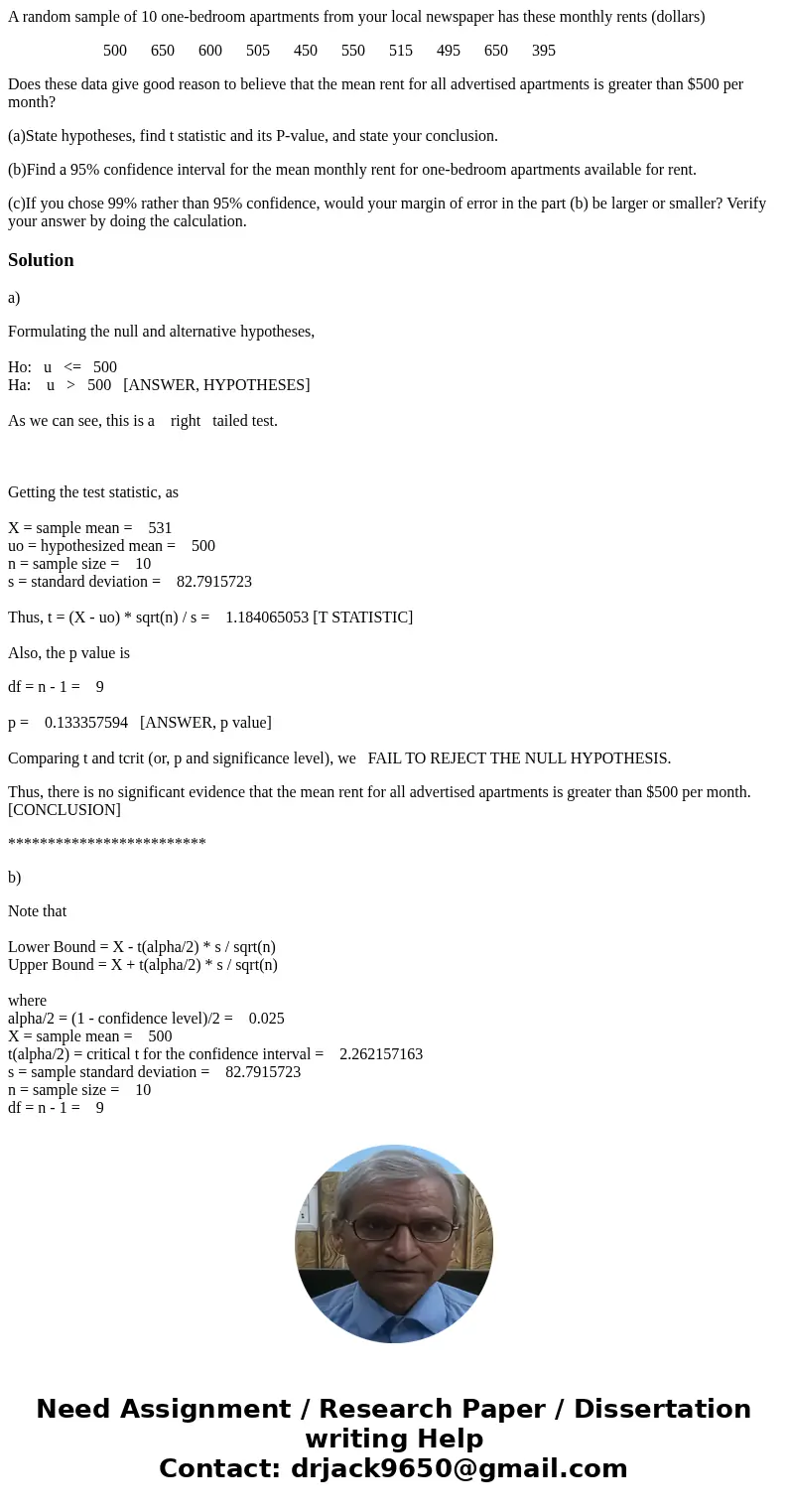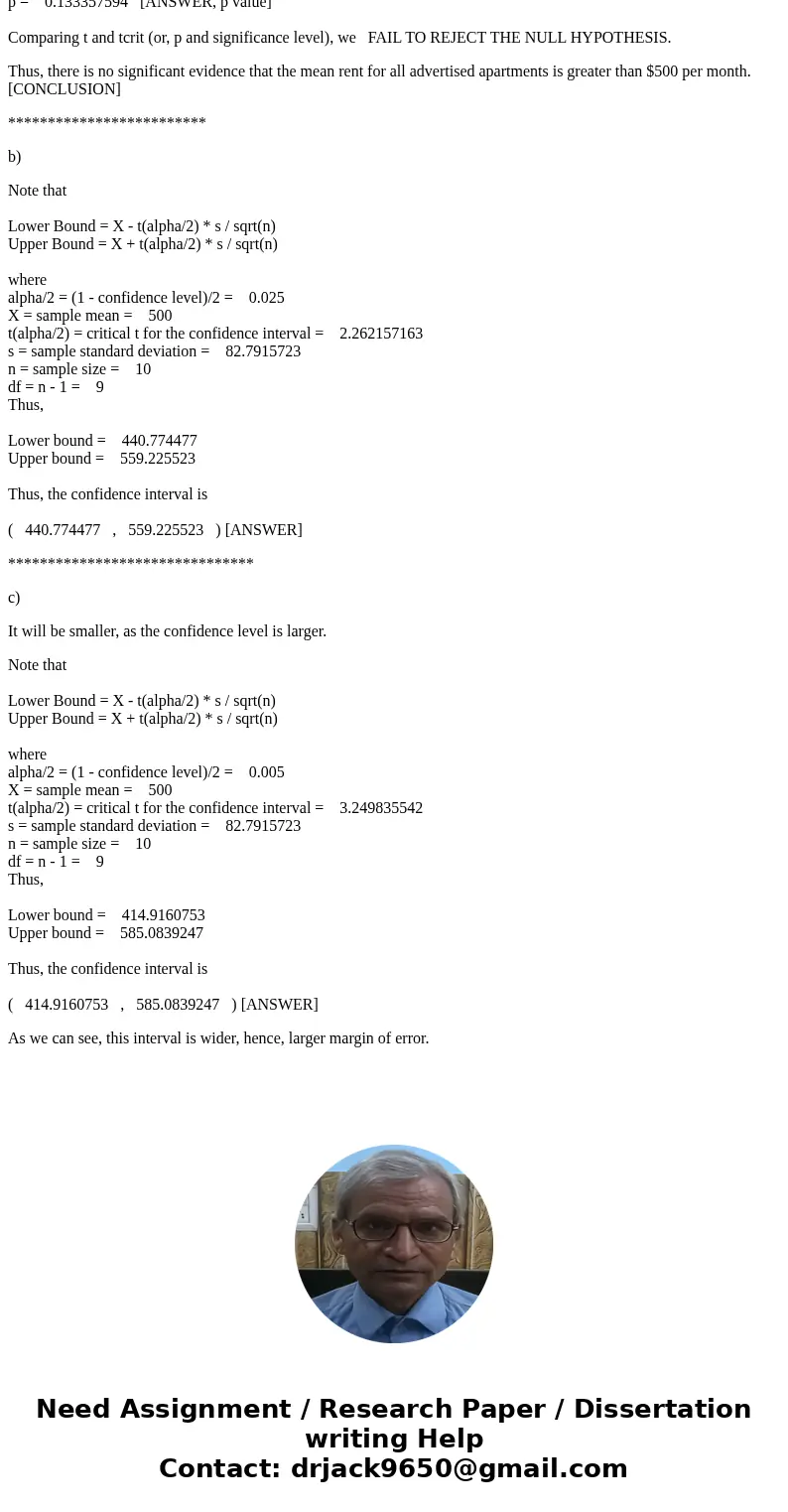A random sample of 10 onebedroom apartments from your local
A random sample of 10 one-bedroom apartments from your local newspaper has these monthly rents (dollars)
500 650 600 505 450 550 515 495 650 395
Does these data give good reason to believe that the mean rent for all advertised apartments is greater than $500 per month?
(a)State hypotheses, find t statistic and its P-value, and state your conclusion.
(b)Find a 95% confidence interval for the mean monthly rent for one-bedroom apartments available for rent.
(c)If you chose 99% rather than 95% confidence, would your margin of error in the part (b) be larger or smaller? Verify your answer by doing the calculation.
Solution
a)
Formulating the null and alternative hypotheses,
Ho: u <= 500
Ha: u > 500 [ANSWER, HYPOTHESES]
As we can see, this is a right tailed test.
Getting the test statistic, as
X = sample mean = 531
uo = hypothesized mean = 500
n = sample size = 10
s = standard deviation = 82.7915723
Thus, t = (X - uo) * sqrt(n) / s = 1.184065053 [T STATISTIC]
Also, the p value is
df = n - 1 = 9
p = 0.133357594 [ANSWER, p value]
Comparing t and tcrit (or, p and significance level), we FAIL TO REJECT THE NULL HYPOTHESIS.
Thus, there is no significant evidence that the mean rent for all advertised apartments is greater than $500 per month. [CONCLUSION]
*************************
b)
Note that
Lower Bound = X - t(alpha/2) * s / sqrt(n)
Upper Bound = X + t(alpha/2) * s / sqrt(n)
where
alpha/2 = (1 - confidence level)/2 = 0.025
X = sample mean = 500
t(alpha/2) = critical t for the confidence interval = 2.262157163
s = sample standard deviation = 82.7915723
n = sample size = 10
df = n - 1 = 9
Thus,
Lower bound = 440.774477
Upper bound = 559.225523
Thus, the confidence interval is
( 440.774477 , 559.225523 ) [ANSWER]
*******************************
c)
It will be smaller, as the confidence level is larger.
Note that
Lower Bound = X - t(alpha/2) * s / sqrt(n)
Upper Bound = X + t(alpha/2) * s / sqrt(n)
where
alpha/2 = (1 - confidence level)/2 = 0.005
X = sample mean = 500
t(alpha/2) = critical t for the confidence interval = 3.249835542
s = sample standard deviation = 82.7915723
n = sample size = 10
df = n - 1 = 9
Thus,
Lower bound = 414.9160753
Upper bound = 585.0839247
Thus, the confidence interval is
( 414.9160753 , 585.0839247 ) [ANSWER]
As we can see, this interval is wider, hence, larger margin of error.


 Homework Sourse
Homework Sourse